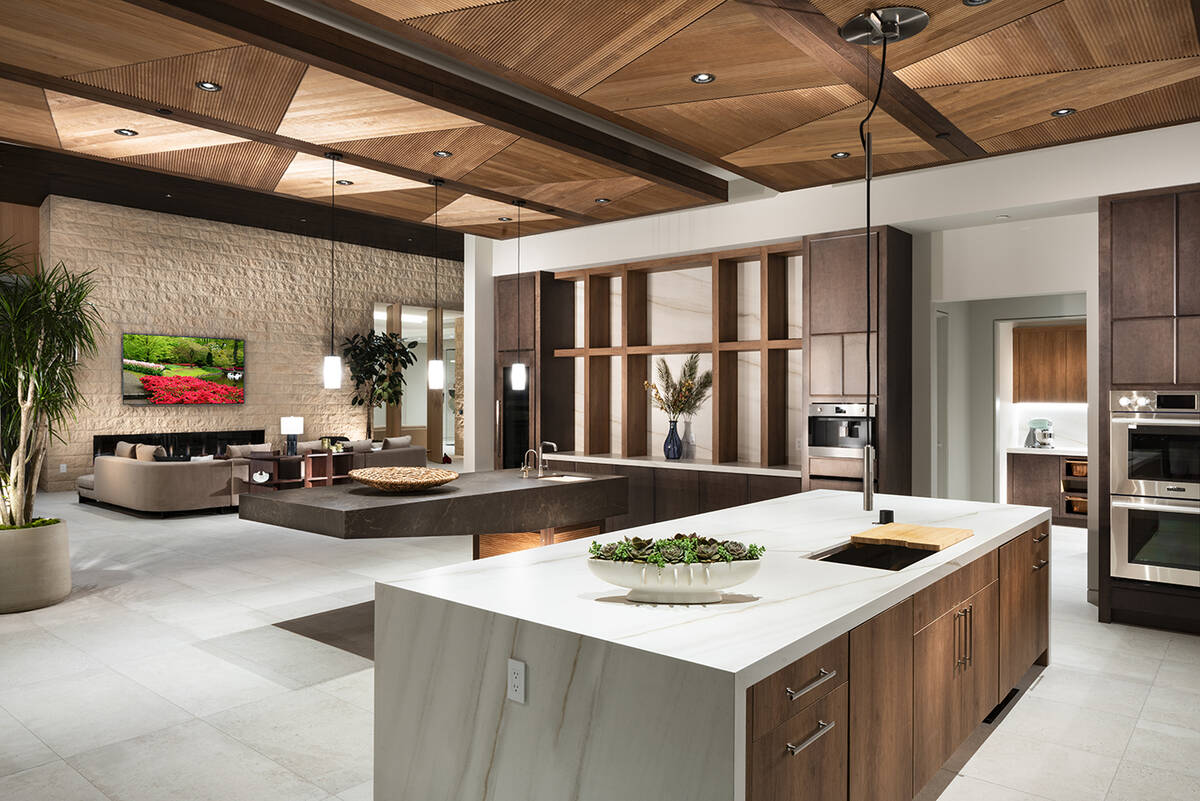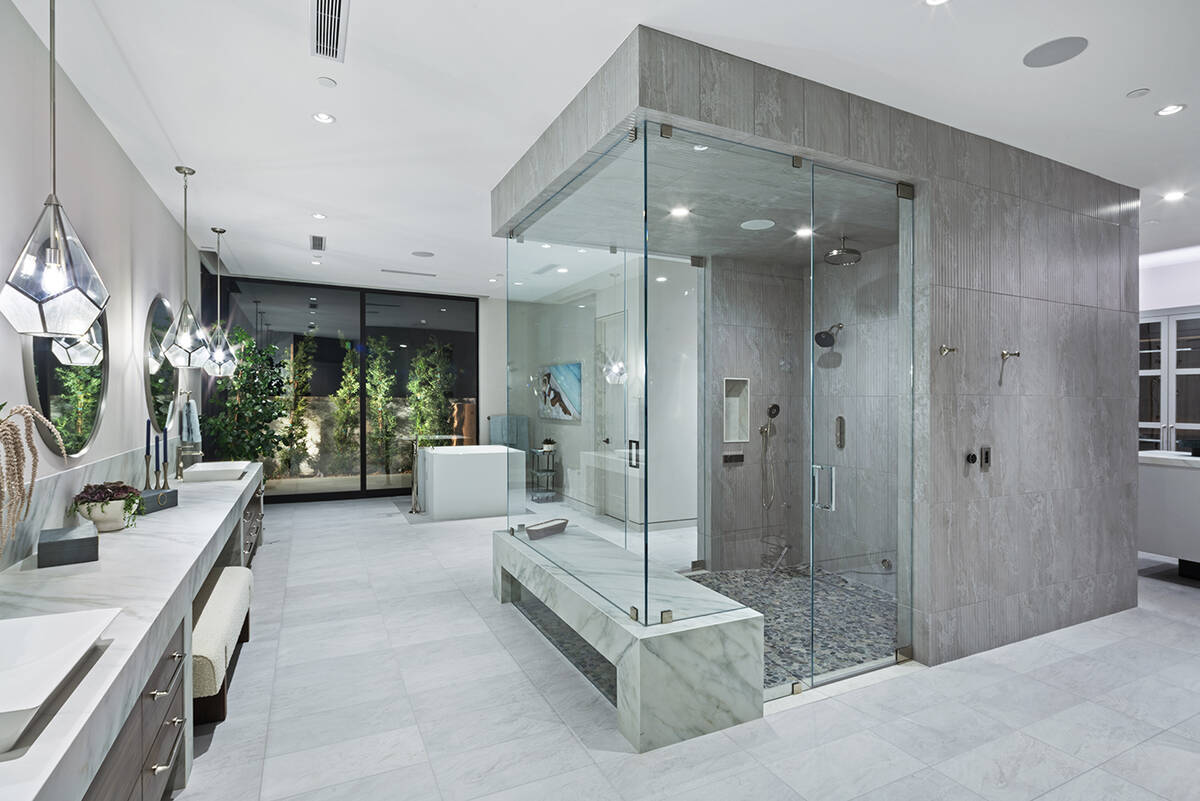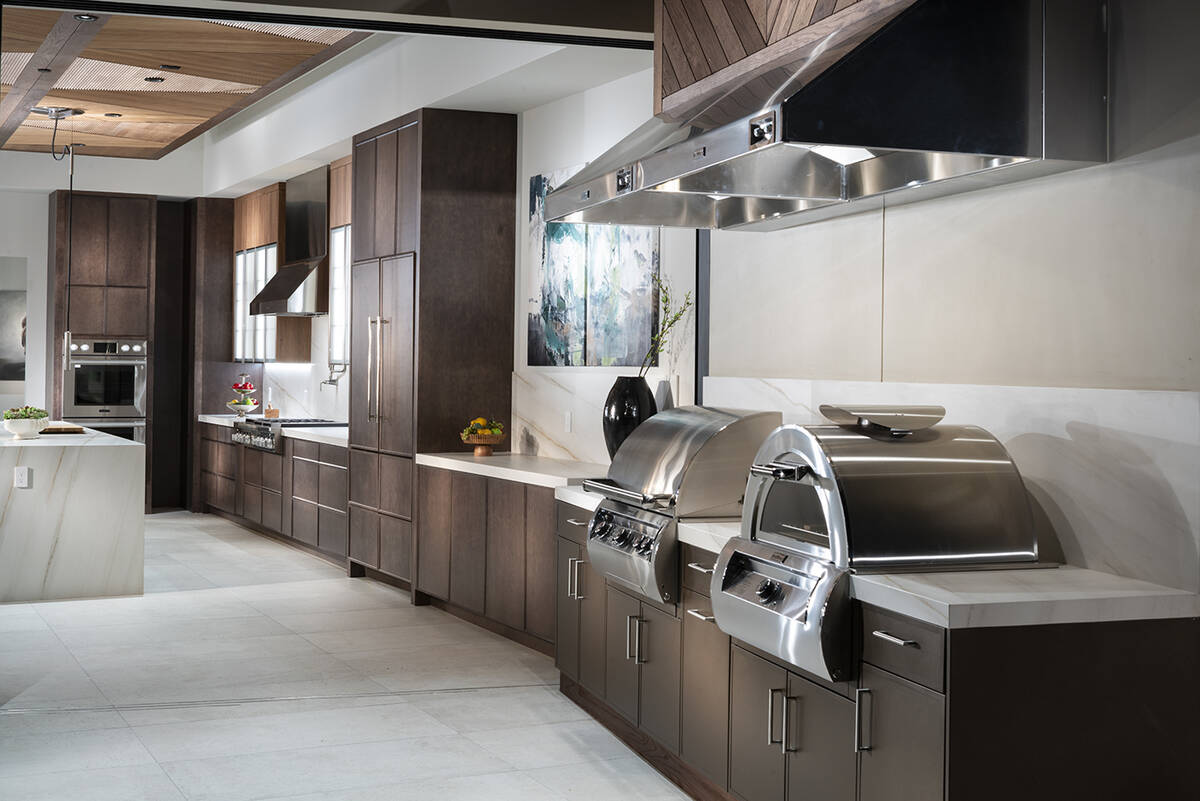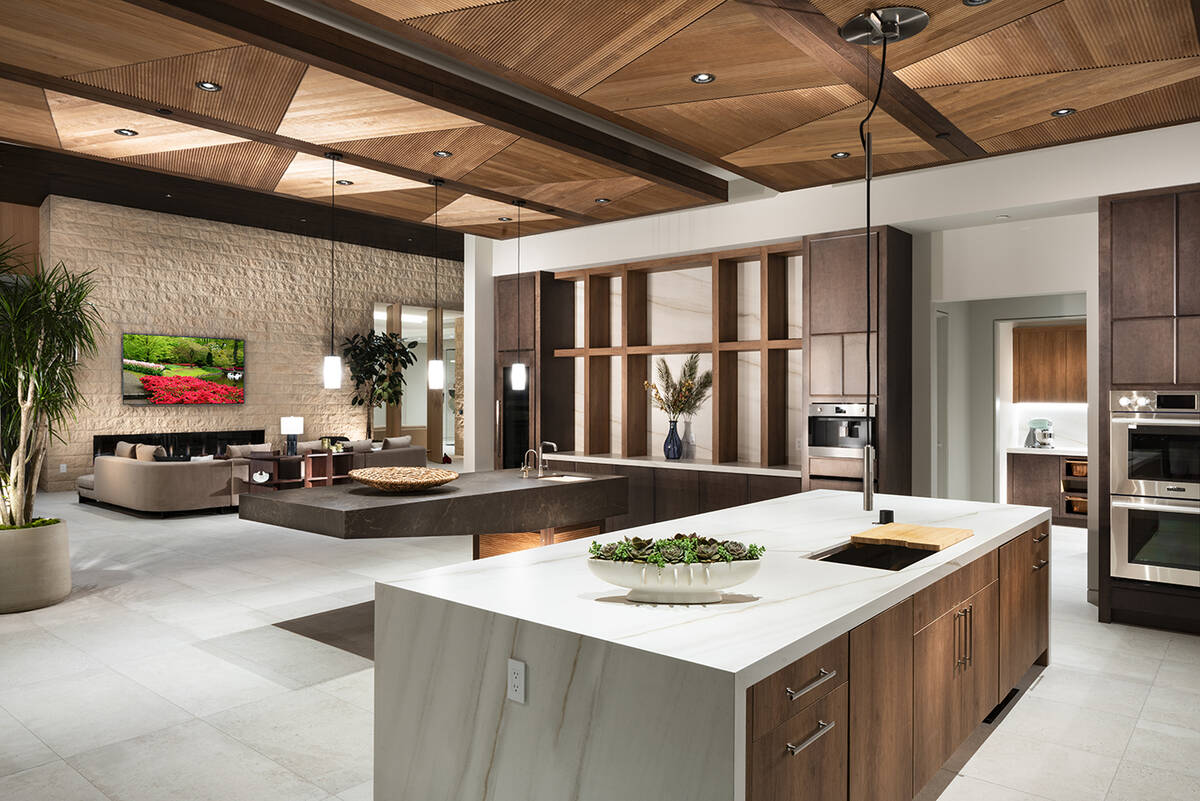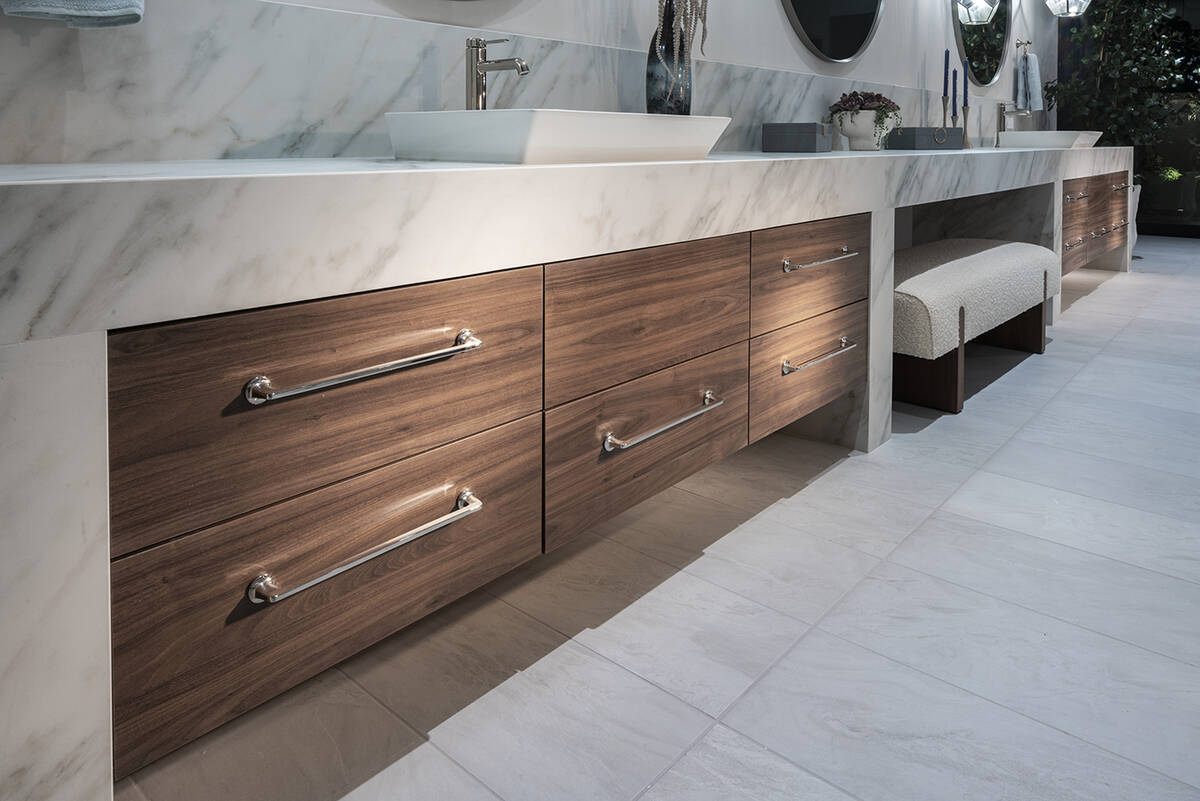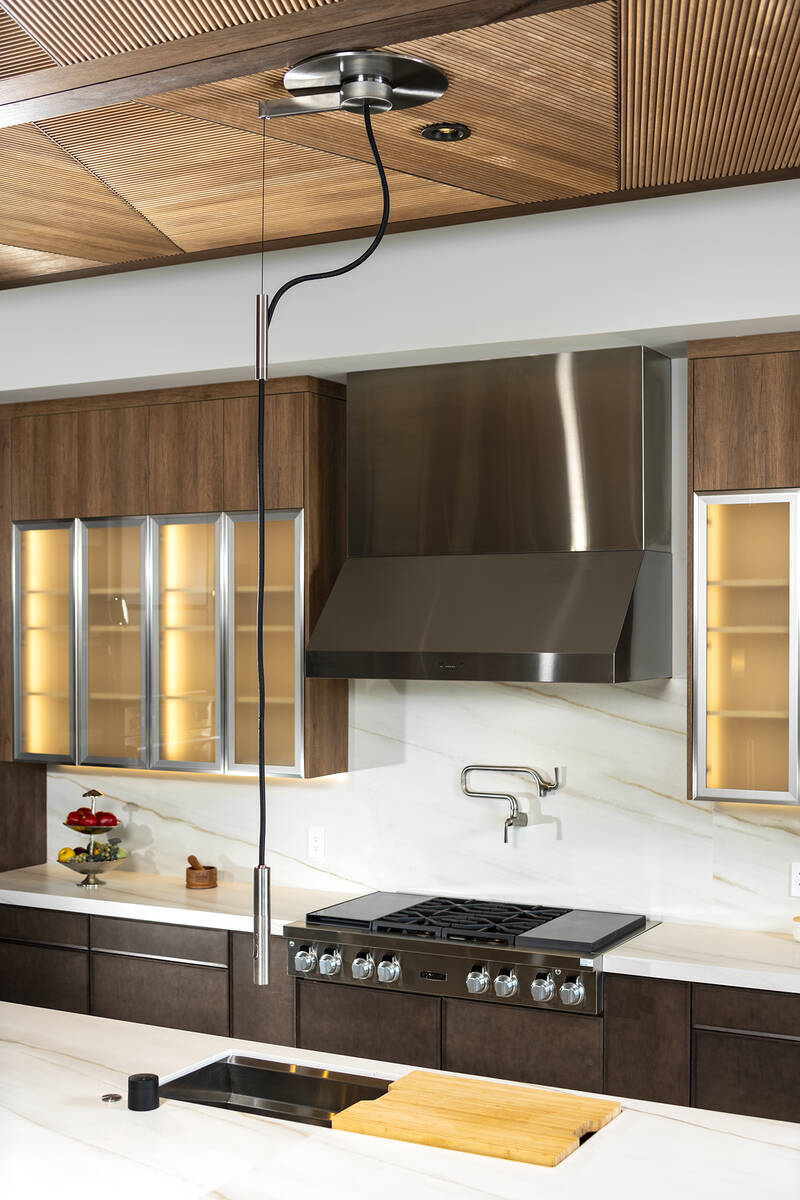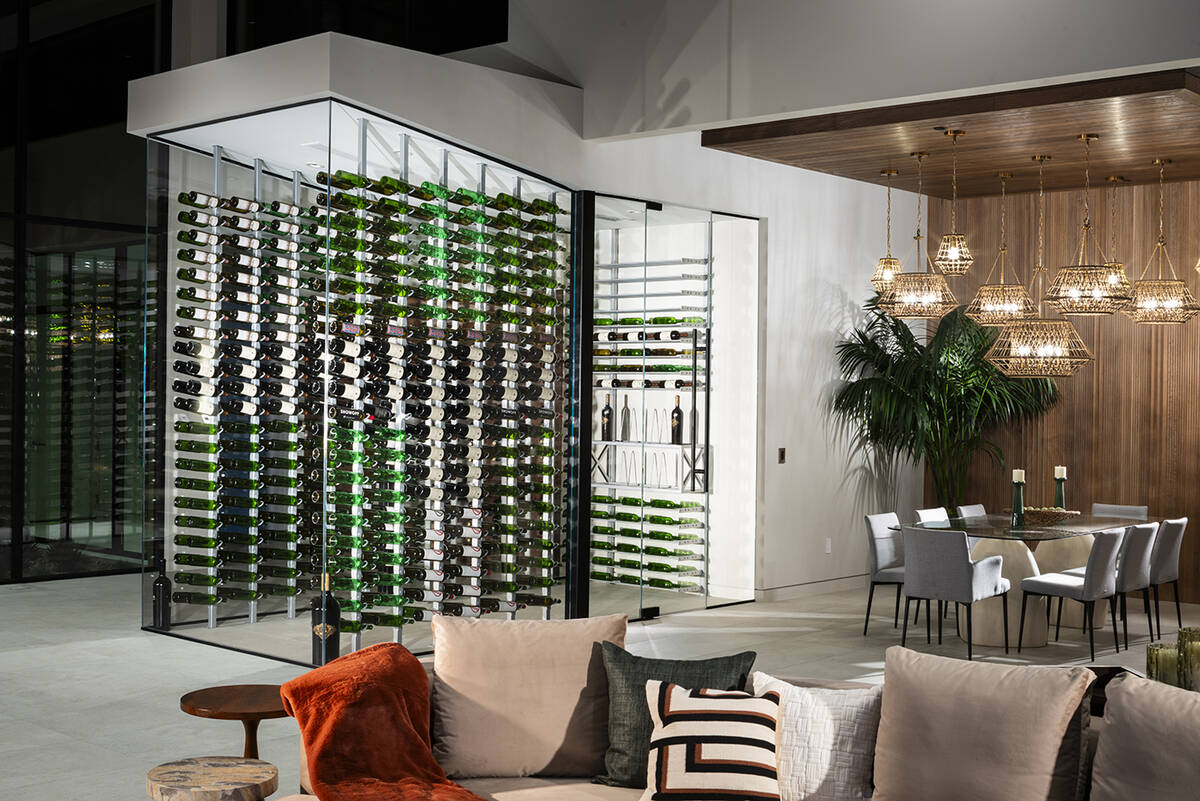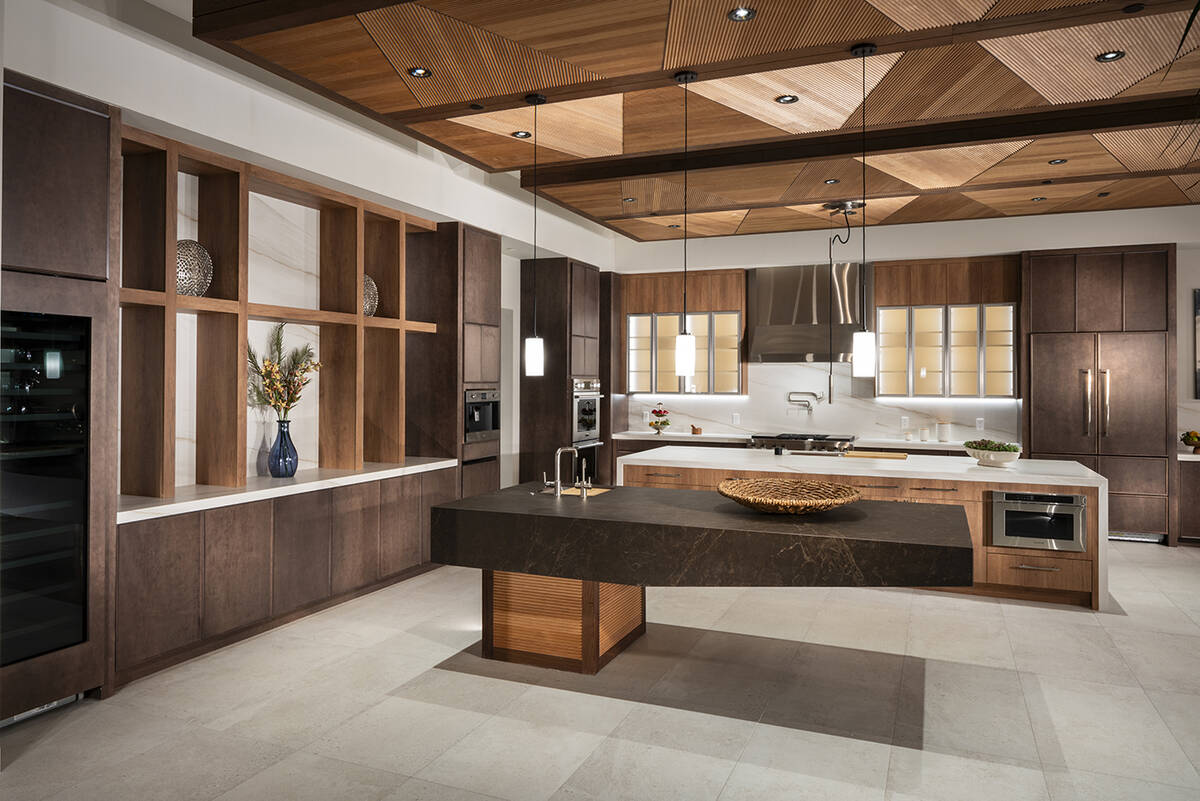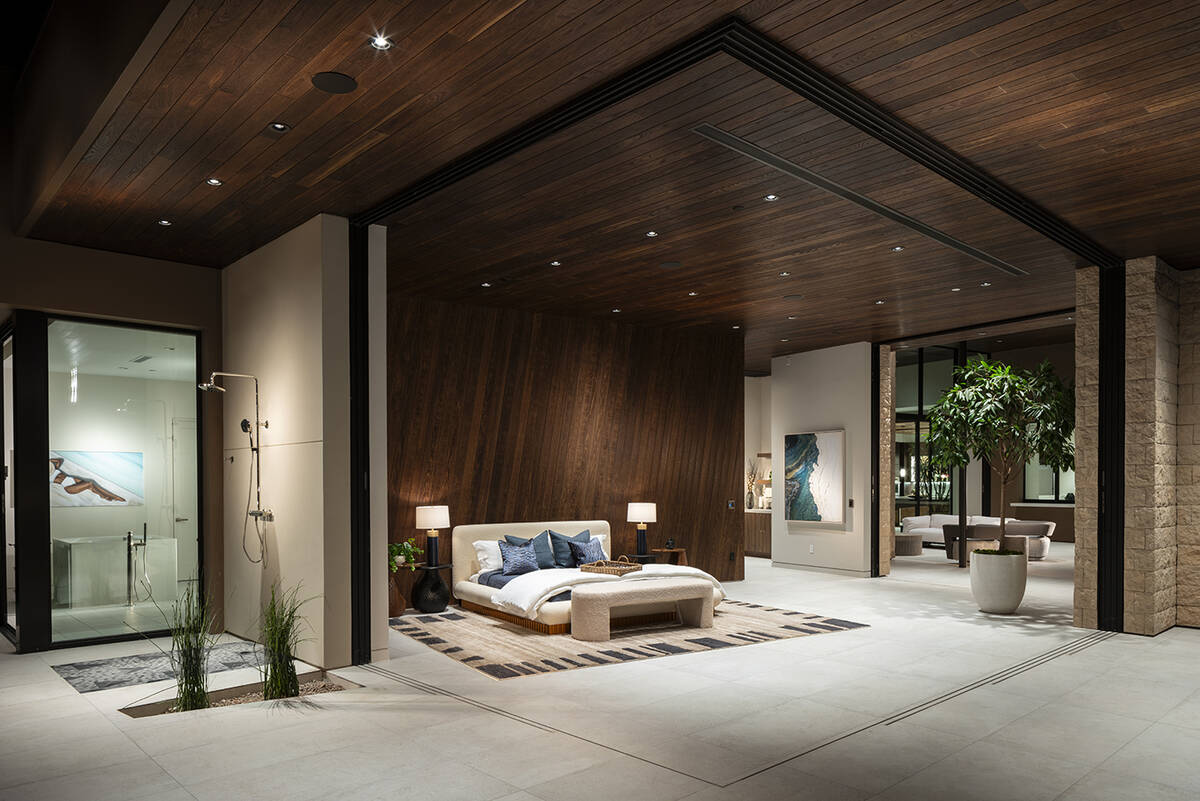Net-zero energy homebuilding has been gaining popularity with luxury designers as they push new boundaries to deliver cutting-edge performance homes to their clients.
A net-zero home should generate as much energy as its residents consume, while also enhancing occupant comfort and well-being. The 2024 New American Home is a good example of green building.
New American Home of 2024
The New American Home of 2024 was designed and built by Daniel Coletti, owner of Sun West Custom Homes, to push the envelope of energy-efficient design and solar power generation, while also creating a resort-like experience that blends luxury, ease and inspiration.
“I always try to make our houses feel like homes, not commercial spaces,” Coletti said. “It starts with the kitchen.”
Located in the upscale community of Ascaya in Henderson, the showcase home was created for the International Builders’ Show during February as an exhibit space. Guided tours were staged with the National Association of Home Builders, ProBuilder and the NAHB Suppliers Council. After the trade show, the home was sold to a customer for $10.18 million.
The single-story residence measures more than 7,722 square feet of living space. A series of motorized glass pocket doors allow for a panoramic, 280-degree view of the Las Vegas Valley, as well as selective control of an indoor-outdoor living experience from multiple rooms.
The multi-paned glass windows and doors were manufactured by Western Window Systems with a low-emissivity coating and filled with inert argon gas, then installed into a tight fit within the framed wall structure by the Sun West construction team. Roof overhangs also help provide additional shade from the desert sun.
When the pocket doors were closed and sealed, the air infiltration tightness of the home was measured at 0.35 air changes per hour by using a blower-door test.
Two Trails, an energy audit company, worked with the construction team to test and certify the energy-efficiency performance during each phase of the homebuilding.
Energy efficiency was enhanced by blending multilayer reflective Fi-Foil insulation with Holcim open-cell polyurethane spray foam. The foam was sprayed behind exterior framed walls that were sheathed by Carlisle insulation board and wrapped with AeroBarrier air sealing material. Total insulation effectiveness was rated at R-26. The attic of the home was not vented but also sealed with open-cell spray-foam insulation rated at R-22.
Overall energy efficiency was evaluated at 47 percent greater than a code-built reference home as measured through the standardized HERS home energy rating system.
The plumbing system included a Rinnal tankless water heater, Enovative recirculating hot water pumps, Kohler low-flow water fixtures, LG Signature Kitchen Suite of Energy Star-rated appliances and a micro-spray outdoor landscape irrigation system. The plumbing system was designed to save 50 percent of the annual water usage compared to baseline construction for a conventional luxury home.
On the rooftop of The New American Home, 84 photovoltaic solar panels from Solaria were installed to generate 31 kilowatts of electric power. The solar panels were coupled with a Schneider Boost solar storage battery, as well as a backup Kohler generator. The integrated system can provide 100 percent of the annual electric energy needs for the residence while also completing the net-zero energy equation.
Management of power generation and consumption in the home was also integrated into the Josh.ai home automation system. Voice or touch-screen prompts to the Josh App by residents could control and customize operational variables of room temperature, air conditioning, lighting, appliances, water consumption and entertainment systems to personalize comfort. At the same time, self-training and inference features of the Josh artificial intelligence system can gradually learn how to predict and adapt to a family’s daily needs.
The New American Home of 2024 was designed and built to exceed performance requirements for certification to the Emerald level of the National Green Building Standard, the U.S. Environmental Protection Agency’s Energy Star for Homes, WaterSense and Indoor AirPlus programs, as well as the U.S. Department of Energy’s Zero Energy Ready Home standards.
This was the third version of The New American Home designed and built for the International Builders’ Show by Coletti and Sun West Custom Homes.
“You put it all together, a little bit of stress comes and goes, but the day you get done with a beautiful house, it feels like it was all worthwhile,” he said.
Coletti and company are already working with the National Association of Home Builders to develop The New American Home of 2025.
Van Diepen and GRN Vision
Rick Van Diepen is an award-winning Las Vegas architect who is the founder and managing principal of GRN Vision. His company provides professional green building consultant services and certifications for a broad range of commercial, industrial, multifamily housing and public sector clients.
Van Diepen developed a solar energy project to power the iconic “Welcome to Fabulous Las Vegas” sign on the Strip. He also has served as president of the Nevada chapter of the U.S. Green Building Council, as well as on the board of directors for the American Institute of Architects in Las Vegas.
GRN Vision has provided “pro bono” design work for local service organizations, including Habitat for Humanity, Family Promise, Olive Crest and the Historic Harrison House.
When the Great Recession crushed local real estate projects from December 2007 to June 2009, the USGBC and the AIA began staging educational sessions to cope with more difficult economic, supply chain and climate challenges, and to enable construction projects to become more resilient.
“The global conversation changed,” Van Diepen said. “There was not as much resistance to sustainable design and energy-efficiency after that downturn. Today, we don’t have to talk our clients into designing to LEED certification standards or to add solar panels to a project.”
He felt that the Las Vegas Valley was still about 10 years behind other large metropolitan regions in modernizing building and code standards, but that planning agencies in Clark County, Las Vegas and Henderson were making progress in cooperation with local construction companies.
“Las Vegas is a much younger city. We have adopted and adapted faster than many other established cities,” Van Diepen said.
The architect designed and upgraded his own 1963 vintage Las Vegas home to convert 2,200 square feet of living space into a net-zero energy habitat for his family after going through an energy audit.
He added attic insulation and tightened up the gaps around windows, doors, walls and foundation to the outside air, allowing him to cut his HVAC requirements in half with a more energy-efficient system.
Many of his other appliances were upgraded to more efficient natural gas, electric and water-conserving devices.
That savings on energy consumption allowed Van Diepen to add solar panels and an electric vehicle charging system to his carport. Energy harvested from the sun provided electric power to both his home and a Chevrolet Volt.

